#105 in Vietnam
Bánh Da Lợn: Basic Information
Pronunciation
Alternative Name(s)
Dish Type
Course
Mealtime
Popular Bánh Da Lợn Variations
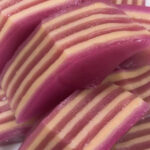
Bánh Da Lợn Lá Cẩm
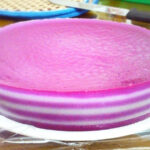
Bánh Da Lợn Khoai Môn
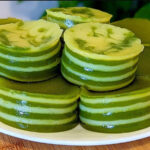
Bánh Da Lợn Sầu Riêng
Bánh Da Lợn: Ingredients and Preparation
Main Ingredients
Main Cooking Method
Preparation Process
Bánh Da Lợn: A Deep Dive
Cultural Significance
Taste
Texture
Aroma
Color
Serving Style
Serving Temperature
Accompaniment
Occasions
Seasons
Special Diets
Calories
Popularity
Popular Similar Dishes
- Kue Lapis
- Khanom Chan
- Kutsinta
Popular Dining Area
Bánh da lợn is a Vietnamese dessert or snack hailing from the Southern part of Vietnam. It is a steamed layered cake generally crafted from rice flour, tapioca starch, sugar, coconut milk, pandan leaves, and mashed mung bean (for the filling). Besides mung bean paste, bánh da lợn’s filling can be made with durian or taro.
Bánh da lợn, which literally means pig skin cake, reflects its pork belly-like appearance. Bánh da lợn has a soft, chewy, and gelatinous texture. Each layer is around 0.4 inches thick with 2 regular colors, which are yellow and green.
The steamed layer cake is also available in other colors with different variations. In the reading, you will find out what they are and how to make this cake at home.
Furthermore, you’ll have a comprehensive view of bánh da lợn through the pros and cons section, its regularly asked questions, and akin dishes to this Vietnamese pig skin cake. Read on to learn more!
Key Points
What Are Variations of Bánh Da Lợn?
Bánh da lợn also comes in other styles with modern or regional twists. In this part, you’ll explore three common versions of this steamed layer cake.
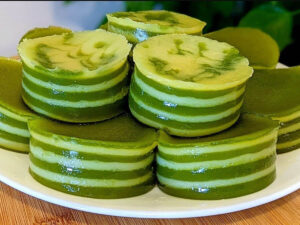
Bánh Da Lợn Sầu Riêng
Contains a filling of durian, known for its strong flavor.

Bánh Da Lợn Khoai Môn
Made with taro (khoai môn in Vietnamese) filling.
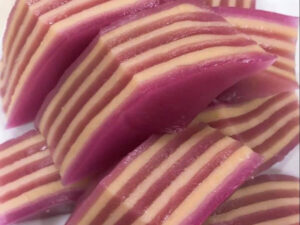
Bánh Da Lợn Lá Cẩm
Features a vibrant purple color from lá cẩm leaves from magenta plant with a sweet and earthy taro filling.
That’s some delightful variations of bánh da lợn. Next, let me guide you through the traditional techniques to make this layered sweet treat. Keep reading!
How to Make Bánh Da Lợn?
Here are five main steps to turn simple ingredients into soft and delicious bánh da lợn.
Step 1: Prepare the filling
Cook and mash mung beans, durian, or taro with sugar to create the filling.
Step 2: Mix the batter
Combine tapioca starch, rice flour, coconut milk, and sugar. Divide and color half with pandan for green, or lá cẩm from magenta plant for purple.
Step 3: Steam Layers
Pour a layer of batter into a pan, steam until set, then add a layer of filling. Repeat layering and steaming.
Step 4: Final Steam
After the last layer, steam the whole cake for an additional 20-30 minutes.
Step 5: Cool and Serve
Let the cake cool down, then slice and serve at room temperature or chilled.
Now that you’ve explored the process of making bánh da lợn, it’s important to consider the broader picture of the advantages and disadvantages of consuming this traditional Vietnamese dessert.
Pros and Cons of Eating Bánh Da Lợn
This section presents a table detailing the nutritional benefits and considerations of eating bánh da lợn, so check it for more details.
Pros
Cons
Now, let’s move to address other curiosities and their answers with the below part.



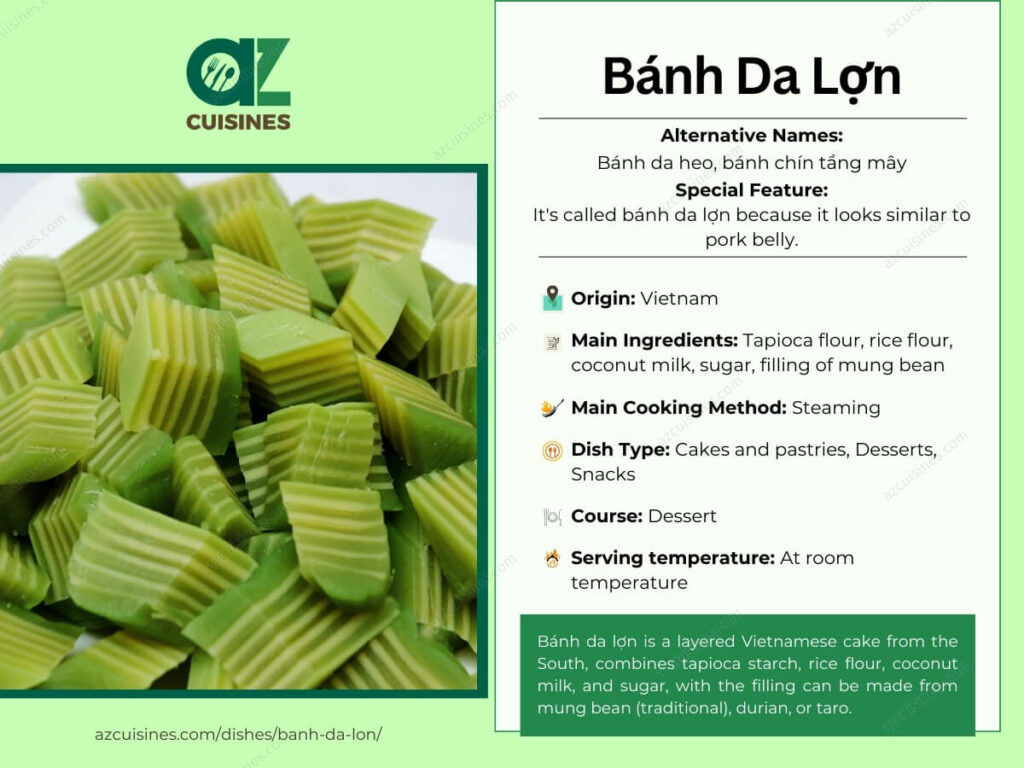
Truc Tran (Kris)
Senior Food Editor
Expertise
Home Cooking, Meal Planning, Recipe Development, Baking and Pastry, Food Editor, Cooking-video Maker, Vietnamese Food Evaluation Expert
Education
Truc Tran (Kris), an experienced food writer and editor, is great at exploring and describing global cuisines, from simple street food to fancy dining. In her writing, she skillfully mixes different flavors, cooking methods, and culinary traditions, showing the unique character of various cultures through their food and drinks. On azcuisines.com, Kris highlights her knowledge, especially in Asian cuisine and worldwide traditional dishes.